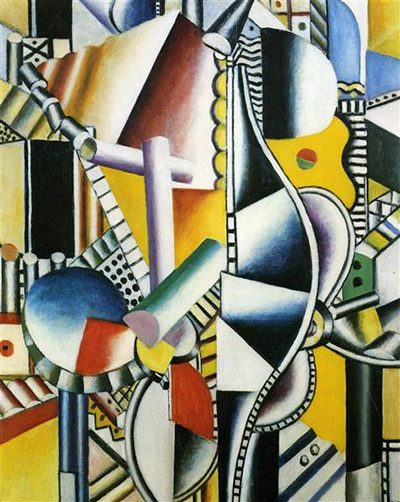Fernand Léger was a French water-colorist, sculptor, and motion picture maker. Among his early operations, he shaped a peculiar procedure of cubism which he slowly but surely reformed into a more metaphorical, anti-elitist style.
Fernand Léger primarily trained as a designer before taking a journey to Paris, where he turned out to be an architectural planner. He later registered at the School of Ornamental Arts to shape his painting journey. Before enrolling in the School of Ornamental Arts, he was rejected in Beaux-Arts but he never loses hope. He, however, joined the Beaux-Arts as a non-enrolled scholar. It was not until age 25 that Fernand Leger began taking his painting work seriously. It was at this juncture that his artwork began showing the impact of impressionism. Among his numerous artwork, Propellers Second State has really attracted the attention of many.
Léger's involvement in the First World War had a noteworthy consequence on his artwork. He was able to shape many outlines of weaponry pieces, jets, and associated soldiers. Being unadulterated in the artwork doesn't come stress-free as you may dearth necessary knowledge ending up producing distasteful sculpture. All artists work towards producing perfect sculpture and Fernand Leger got some supports from a friend. Among lots of people he met on his painting journey, he really admires the work of the following artist and this really heightened his morale. They include; Henri Rousseau's artwork, Le Corbusier and Amédée Ozenfant artwork. Propellers Second State refers to Leger's work with Tubism - a term coined as an extension to Cubism.
Fernand did not keep the knowledge for himself but in alliance with Ozenfant, he conveyed the Académie Moderne where he shared his knowledge on artwork. The technique which was applied by the leger in his artwork was oil on canvas technique. Oil on canvas watercolors is a painting form that permits the painter to custom oil-based paints to generate chefs-d'oeuvre on hard-pressed canvas boards. The minute the canvases have been produced, they customarily take a short duration of time to dry and once dry, they are further coated in a gloss. The key benefits of oil tints are their suppleness and profundity of color. Normally used parching oils encompasses; linseed oil, walnut oil, poppy seed oil plus the safflower oil. If you have a passion for becoming an artist, oil on canvas technique is the best as it portrays the exact feature of the sculpture. This amazing artwork together with other gorgeous artwork of Fernand can be found in the Museum of Modern Art in New York.
Propellers Second State features a myriad of volume, with triangles, circles and squares arranged within an imaginary reality that is inspired directly from the mechanical world. The front and background have little to differentiate them as the artist chooses to turn his back on many of the principles of traditional art, which essentially flattens the image and makes it far harder to distinguish different parts of the composition. We see wavy lines which are interspersed with gradients of colour, with black being a prominent tone here. There is also the yellow, blue and red tones that appear in so many of his other paintings, but are used sparingly here on the individual shapes. There are also a series of horizontal lines which appear to create the image of steps, though at different angles and sizes almost at random.




